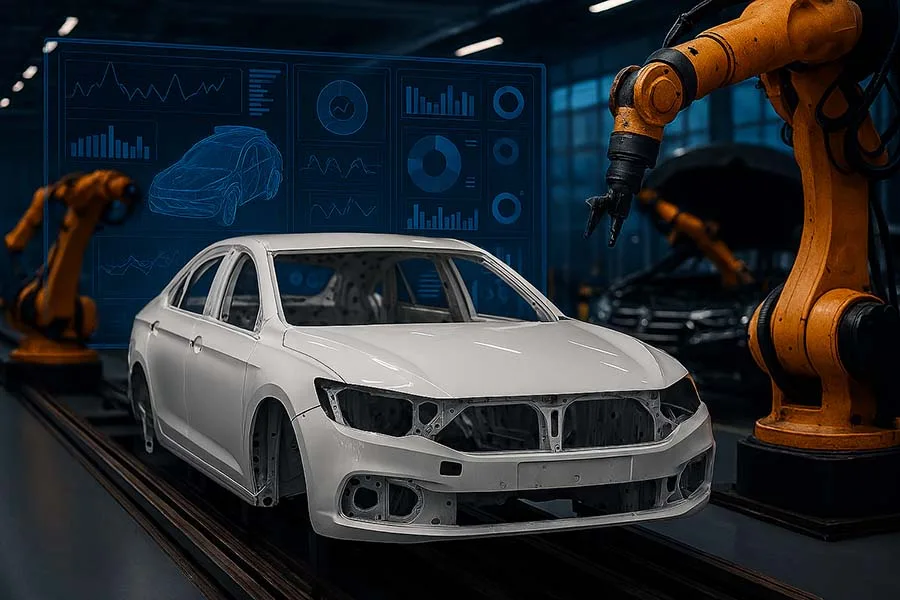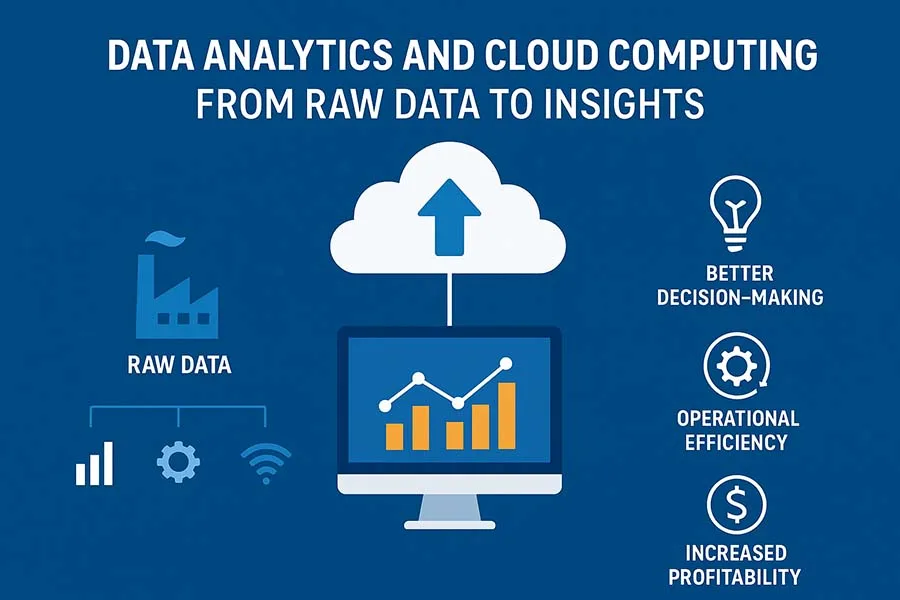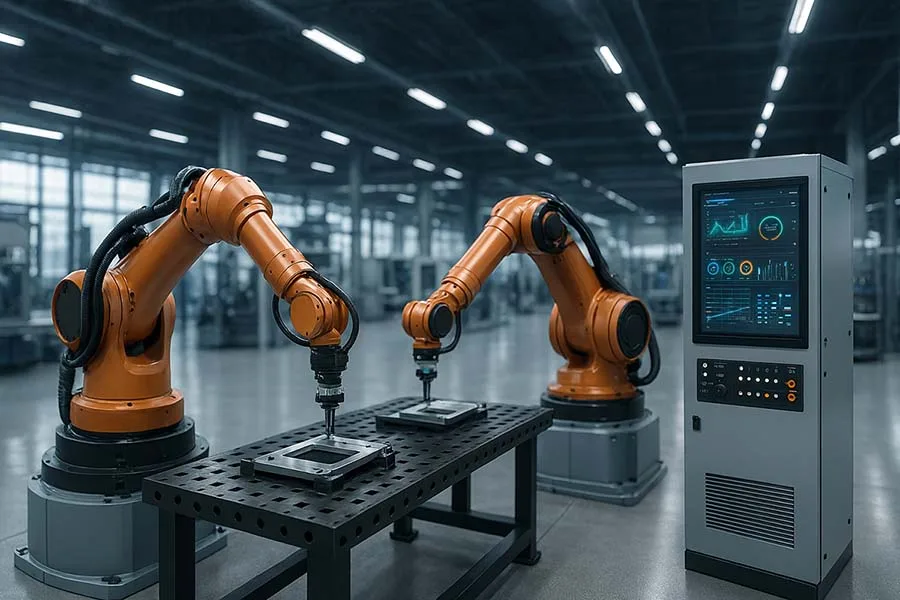Introduction: The Rise of Digital Twins
Imagine having a virtual replica of a factory, a wind turbine, or even a human organ that can simulate, predict, and optimize real-world operations in real time. This is no longer science fiction—digital twin technology is transforming industries by merging the physical and digital worlds. From optimizing machinery performance to supporting smart city planning, digital twins are becoming essential in the era of Industry 4.0.
In this article, we’ll explore what digital twins are, why they matter, the key technologies behind them, practical applications, and future trends. By the end, you’ll understand why companies invest heavily in building digital replicas of their assets and operations.
What Is a Digital Twin?
A digital twin is a virtual model of a physical object, system, or process that mirrors its real-world counterpart. By combining sensors, IoT devices, data analytics, and simulation software, digital twins allow engineers and operators to monitor, predict, and optimize performance in real time.
Key characteristics include:
- Real-time data integration: Sensor data from the physical asset updates the digital twin continuously.
- Simulation & prediction: Operators can run “what-if” scenarios before making changes in the real world.
- Feedback loop: Insights from the digital twin inform maintenance, design, and operational decisions.
Why Digital Twin Technology Matters
Digital twin technology offers numerous advantages across industries:
- Improved operational efficiency: Identify bottlenecks and optimize processes without physical trials.
- Predictive maintenance: Reduce downtime by forecasting failures before they occur.
- Enhanced product design: Test and iterate designs virtually, saving costs and time.
- Risk mitigation: Simulate hazardous scenarios safely in a virtual environment.
- Sustainability: Optimize energy use and reduce waste through real-time insights.
Lesser-known fact: NASA pioneered early digital twin concepts in the 1960s, using simulations to monitor spacecraft and astronauts remotely.
Core Technologies Behind Digital Twins
Digital twins rely on several cutting-edge technologies:
- Internet of Things (IoT): Connects sensors and devices to feed live data into the digital model.
- Artificial Intelligence & Machine Learning: Analyze trends, predict failures, and optimize processes automatically.
- Cloud Computing & Big Data: Stores vast amounts of data and enables powerful simulations.
- Augmented & Virtual Reality (AR/VR): Visualize and interact with digital twins in immersive ways.
- Simulation & Modeling Software: Creates accurate virtual replicas and runs predictive analytics.
Types of Digital Twins
Digital twins can be categorized based on their purpose:
- Component or Part Twins: Focus on individual parts, e.g., a jet engine blade.
- Asset Twins: Replicate entire machines or vehicles.
- System or Process Twins: Model production lines, supply chains, or energy grids.
- City or Ecosystem Twins: Simulate urban environments for smart city planning.
Real-World Applications
1. Manufacturing
- Smart factories: Digital twins optimize production lines, reduce downtime, and predict maintenance needs.
- Example: Siemens uses digital twins to simulate factory operations, reducing costs and improving output quality.
2. Energy & Utilities
- Wind turbines and power grids: Real-time simulations optimize energy output and detect faults.
- Example: GE uses digital twins to monitor turbines globally, improving performance and reducing maintenance costs.
3. Healthcare
- Personalized medicine: Digital twins of organs or entire patients enable tailored treatments.
- Example: Researchers create virtual hearts to simulate interventions for cardiac patients.
4. Smart Cities & Infrastructure
- Urban planning: Simulate traffic, pollution, and resource usage.
- Example: Singapore’s Virtual Singapore project models the city for urban planning and disaster preparedness.
5. Aerospace & Automotive
- Aircraft and vehicle monitoring: Digital twins optimize performance, improve safety, and support autonomous systems.
- Example: Tesla uses digital twins to monitor car performance and deliver over-the-air software updates efficiently.
Challenges and Considerations
While powerful, digital twins come with challenges:
- Data security: Continuous data exchange increases cybersecurity risks.
- High initial investment: Setting up sensors, cloud infrastructure, and simulations can be expensive.
- Data quality & integration: Inaccurate sensor data can lead to unreliable predictions.
- Skills gap: Organizations need expertise in IoT, AI, and simulation technologies.
The Future of Digital Twin Technology
Digital twins are expected to expand beyond industrial applications:
- Predictive urban planning: Cities will optimize traffic, energy, and waste systems dynamically.
- Personalized healthcare: Virtual human twins for preventive care and treatment simulations.
- Supply chain digital twins: Real-time modeling of global logistics to minimize disruptions.
Fun fact: Some futurists envision digital twins for humans, allowing virtual experimentation with lifestyle changes or medical treatments before real-life implementation.
Digital Twin Technology FAQ
Further Read
- Core Foundations of Industry 4.0: The Tech Stack Explained
- Industrial Internet of Things (IIoT): Connecting Machines, Data, and People
- Digital Twin Technology: From Concept to Real-World Applications
- Robotics and Automation: The Heart of Smart Manufacturing
- Artificial Intelligence (AI) and Machine Learning: Smarter Manufacturing
- Augmented Reality (AR) and Virtual Reality (VR): The Human-Tech Interface
- Data Analytics and Cloud Computing in Industry 4.0
- Cybersecurity in Industry 4.0: Protecting the Smart Factory
- Integration and Interoperability in Industry 4.0
- Benefits of Understanding the Core Foundations: People, Processes, and Technology
- Challenges and Barriers in Industry 4.0: Overcoming the Roadblocks to Smart Manufacturing
- The Future of Manufacturing: Towards Industry 5.0
Conclusion
Digital twin technology bridges the physical and digital worlds, unlocking unprecedented insights, efficiency, and innovation. Whether for manufacturing optimization, urban planning, or personalized healthcare, digital twins are revolutionizing the way we design, monitor, and manage assets. As technology advances and adoption grows, digital twins will play a pivotal role in Industry 4.0, smart cities, and beyond.
Ready to explore digital twins in your industry? Share your thoughts, experiences, or questions below!





